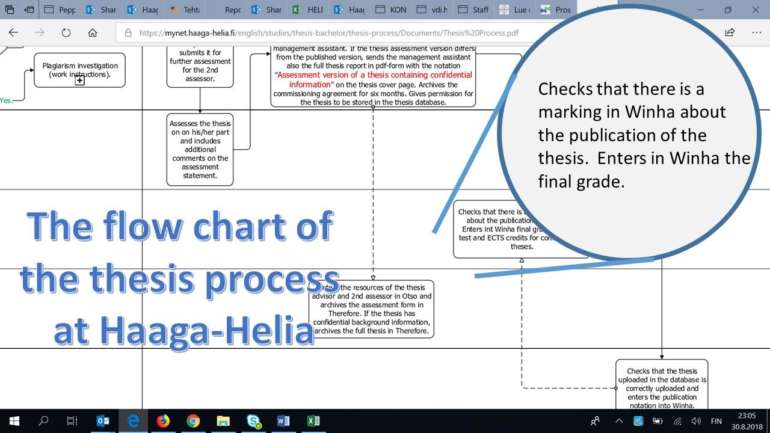How you can benefit from the Quality System in everyday work
The staff and students often misunderstand the quality system of the university. When working as the quality manager of Haaga-Helia University over eight years, I had many discussions with the staff and students about the issue. Based on those discussions, the quality system seemed to appear as some kind of background feature, which did not touch one’s everyday routines. Well, at least some staff members were aware that the QS (quality system) contains guidelines for the operations of the university, even some descriptions of selected process.
A university is a very complicated system in terms of processes and functions. Depending on the level of detail, the number of processes can be counted at least in hundreds. No-one has to master or even be involved with all of them, but still, during a normal working day, one may deal with several different processes. In order to produce good quality and avoid mistakes and hassle, that wastes energy and time, one should not deviate from the process flow. In a flow, there are normally many subsequent phases and persons taking care of their share of the process. Not all the deviations are fatal, but some may end up to a disaster.
As an example, in the end of the Haaga-Helia’s thesis process, a student must publish the thesis in a database. The process description illustrates that the grade of the thesis cannot be saved in the study register until the publication has been confirmed. At some point, the librarians noticed that tens of thesis reports were missing from the database, and the students have been graduated. How the impossible (and a very severe) error became possible?
First, there was a confusion among the thesis supervisors, which was the marching order at the final stage of the process. Some supervisors thought that when the thesis came on their desk to be assessed, it was already published. Second, some relied on the students promise that they will publish the thesis after the grade has been given. The fact here was that the supervisor does not save the grade in the register at all, but it is done by an officer in the Student Affairs Office after the Library has confirmed the publication. The process description was available all the time to tell what the right procedure is. Had that been followed, no problems would have occurred.

Figure 1. A fraction of the flow chart, which describes the thesis process of Haaga-Helia University
The main reason for the mess is the so called human factor. Instead of checking from the process description how to do things right, the supervisors relied on their intuition, and even worse, the assumptions of their colleagues. It is more convenient to ask the colleague about the puzzling matter than search for the proper document. It is also typical to our environment that everybody wants to be professional. And, in order to show the expertise, one should be able to answer the questions, right? So, when a colleague asks for help, an answer has to be given. An assumption, a belief, I reckon, I think – are the expressions which should give a hint that I do not really know the answer, but I make a guess in order to give the impression that I am competent. However, the information I gave may not be valid!
Actually, it does not take that much time and effort to check the proper actions from the documentation – and do things right. We say that there is never enough time to do a thing at once right, but there is always time to correct errors. However, next time when you are not aware of how the thing goes, rely on your quality system, and check from the process description or working instructions document how it really goes. Save some time, it may also save the day.
Text by Key Expert Juha P. Lindstedt / Haaga-Helia University of Applied Sciences